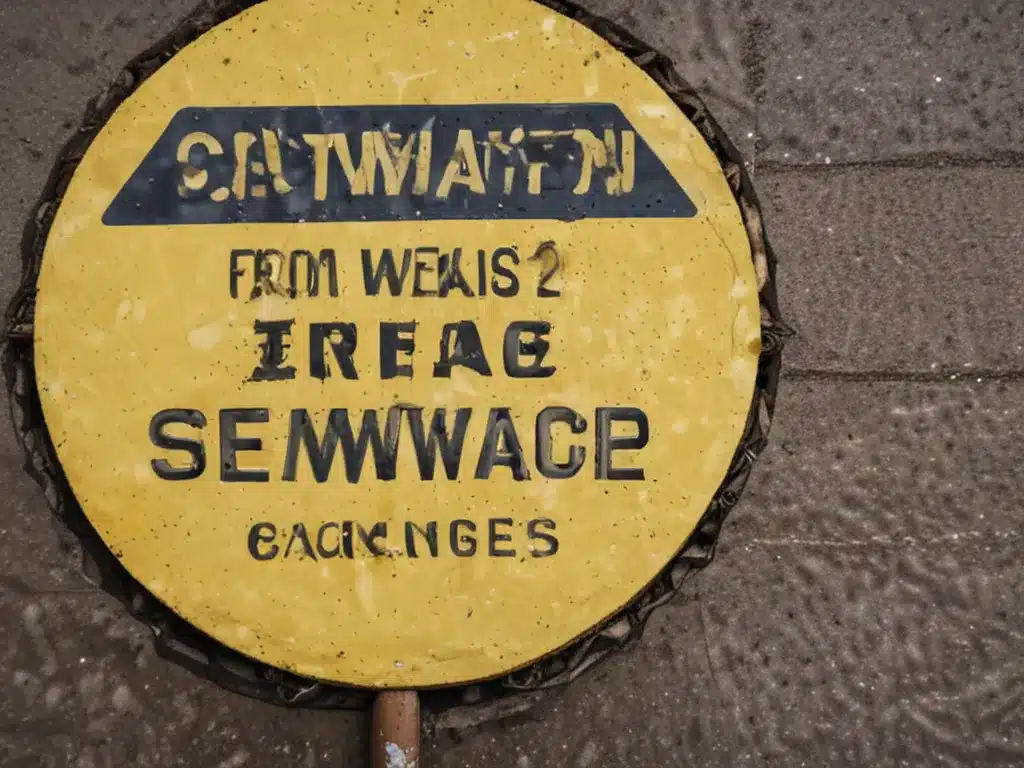What is a sewage backup?
A sewage backup is when wastewater from internal plumbing fixtures backs up into a building through drain pipes. This can happen when there is a blockage or overflow in the sewer line that connects the building’s plumbing to the main sewer line. Sewage backups can cause unsanitary conditions and release harmful bacteria, viruses, and mold into homes and businesses.
Some common causes of sewage backups include:
- Tree roots or debris blocking pipes
- A broken or collapsed sewer line
- Too much rainfall overloading the sewer system
- A sewer line that’s too small to handle capacity
- Grease or waste buildup causing blockages
Sewage backups are an unfortunate health hazard that requires immediate cleanup and disinfection. Exposure to raw sewage can cause illness through contact or breathing in contaminants.
How to prevent sewage backups
Here are some tips to help prevent backups of wastewater into your building:
Regularly maintain pipes
-
Have a professional plumber inspect interior pipes and sewer lines annually. They can clear blockages, repair leaks, and spot potential problems.
-
Install screens on drains to catch hair and debris before entering pipes.
-
Don’t pour fats or harsh chemicals down drains that can build up.
Install backflow valves
-
A backflow prevention valve installed on the main sewer line can stop backups from entering the building. It allows wastewater to flow out but not back in.
-
Consider a sump pump and discharger to remove water from the basement or crawlspace if flooding occurs.
Know the signs of a potential backup
- Gurgling drains and foul sewage odors inside are a sign of a backup. Don’t continue using toilets or sinks if you notice this.
-Pooling water around the foundation or in the basement may mean wastewater is coming back up through floor drains.
Have insurance and an emergency plan
-
Sewage backup coverage can be added to a home or business insurance policy in case extensive repairs are needed.
-
Keep the phone number of a 24/7 plumber handy. Turn off electricity to areas with standing water as a precaution.
How to safely clean up after a sewage backup
If a backup occurs, take these steps to sanitize the area and prevent sickness:
-
Leave the area and ventilate it if sewage gases are present. Call a professional water damage restoration company for large spills.
-
Wear protective equipment like rubber boots, gloves, goggles, and a face mask.
-
Disinfect surfaces with a chlorine bleach solution. Carpeting, drywall, and other porous materials affected may need replacement.
-
Wash hands thoroughly after cleanup. Wash clothes worn during cleanup separately with hot water and bleach.
-
Discard food that may have touched contaminated water. Call your health department for guidelines on what’s safe to keep.
-
Run dehumidifiers, fans, and open windows to dry out the area thoroughly so mold doesn’t develop.
Sewage backups can happen without warning. But being prepared with preventative maintenance, immediate cleanup, and disinfection can help avoid serious illness or permanent building damage. Contacting professionals at the first sign of a backup is recommended.
When should I call a plumber for a sewage backup?
You should call a 24/7 emergency plumber right away if you experience:
- Sewage odors or water with solid waste backing up into sinks, bathtubs, showers, or toilets
- Flooding in your basement or crawlspace from sewage overflow
- Gurgling sounds from drain pipes or foul odors
- Sinks, tubs, or toilets draining very slowly
A professional plumber has the equipment to:
- Safely unblock the main sewer line if tree roots or debris caused a backup
- Repair burst or collapsed sewer pipes
- Install backflow prevention valves if you’ve had previous backups
They can also inspect your home’s plumbing to find and resolve the root cause of the backup. Waiting too long can cause contaminants to spread and result in expensive repairs. So don’t hesitate to call a plumber at the first sign of a sewage backup.
How can I find out if my homeowners insurance covers sewage backups?
To find out if you have coverage for sewage backups, take the following steps:
-
Review your policy – The declarations page outlines coverages but may not mention sewer backups specifically. Read the full policy details.
-
Look for exclusions – Damage from sewer backups may be excluded under the water damage section. But it may be optionally added back under “endorsements.”
-
Contact your agent – Speak with your insurance agent to understand backups coverage for your home and possessions. Coverage amounts and exclusions can vary.
-
Ask about add-ons – Extra sewer backup coverage as an endorsement can typically be added for an additional premium.
-
Check with providers – Discuss backup prevention devices and cleanup services covered by your provider when a sewage loss occurs.
-
Consider upgrades – Higher tiers of homeowners insurance often include more coverages like sewage backups without added endorsements needed.
Knowing what your homeowners insurance does and does not cover for sewage backups is important. This can help you take preventative measures and avoid significant costs if damage occurs. Speaking with an insurance agent is the best way to secure coverage that fits your needs.







